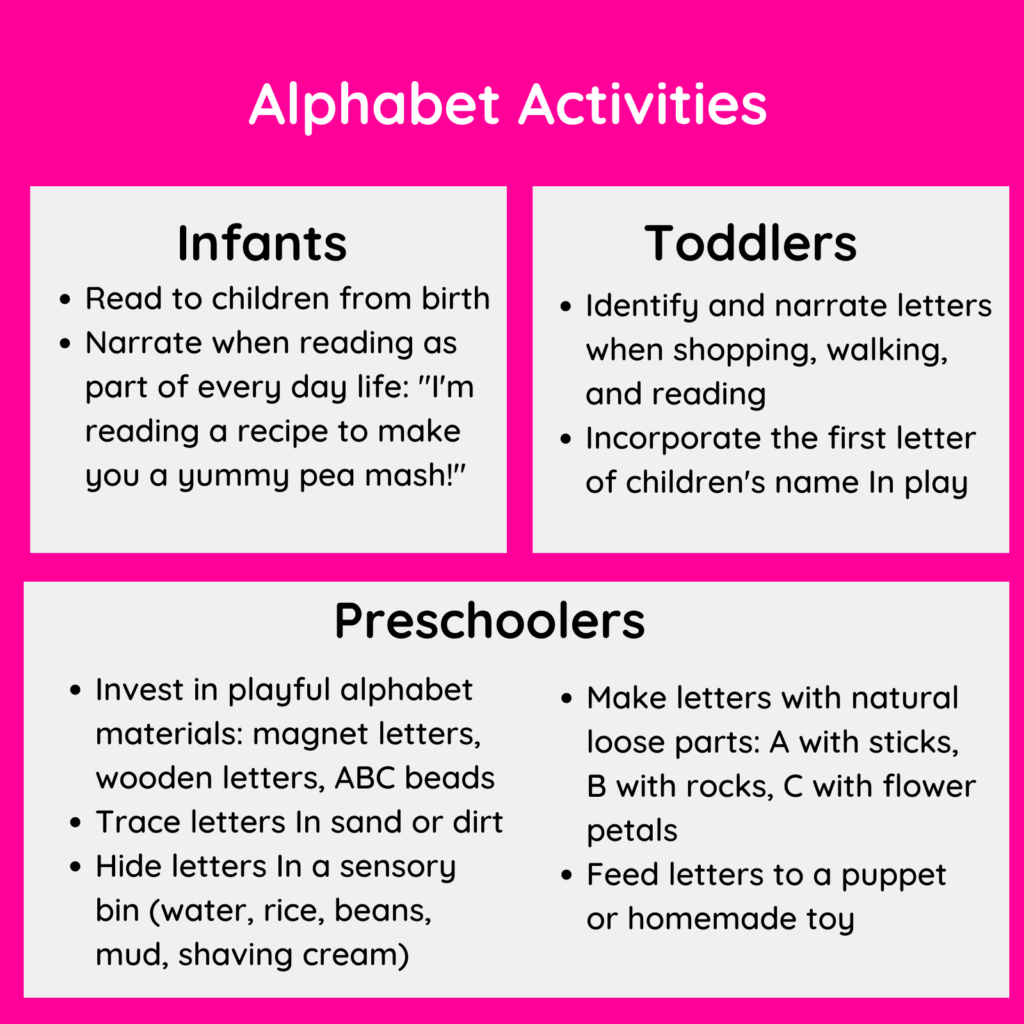
Caregivers and parents are likely very familiar with school readiness pressures as children transition from toddler to preschool age. In a panic, they may wonder if they are doing enough, if children will be ready for school, or if their child will be far behind their peers when they join in preschool or kindergarten. However, the most important thing is to understand with compassion that learning 52 letters (upper and lower case) is a lot for a young child, and the most important thing is to expose children naturally through play. Drilling, flashcards, and memorization are out….play is in! Learning through play is the way that children develop a healthy attitude and curiosity for learning that will support them throughout their academic and personal development.
One of the tried-and-true ways to introduce early ABC’s is to read to children from birth. Not only will they bond with you as you cuddle together, co-regulate, and listen to the sing-song rInscribing hieroglyphs into limestone pillars of ancient Egypt, swishing beautiful trails of black ink on early paper in China, or hammering symbols onto the stone walls of Mayan temples, humans have always sought to make permanent their ephemeral thoughts, lessons learned, and wisdom gained. To a young child, the symbols that represent our alphabet might be as abstract as the hieroglyphs of ancient Egypt, as they learn to interpret what these combinations of lines that intersect, curve, and zig-zag actually mean. There are 26 letters of our Latin Alphabet, not to mention upper-case and lower-case versions of these letters—that’s a lot!
While children enjoy the rhythm of a beautiful story, they learn early on that these written symbols hold meaning and power. Rather than teach children the ABC’s in order from A-Z, caregivers can introduce the letters that are most relevant to children—the ones that represent their own name. When reading, shopping, walking, and playing, caregivers can help children identify “their letter” or the first letter of their name. Sarah sees her “S” on the neighborhood Stop sign as she holds hands with her caregiver on a neighborhood walk, and Victor sees his “V” on the cover of The Very Hungry Caterpillar. For a two-year old, they might quietly take this in as their caregiver points and narrates these discoveries, but a three-year old might excitedly point this out themselves. The basis of these moments is calm connection and bonding, and the alphabet is an added bonus!
As children reach preschool age, caregivers can help children build up to the full alphabet slowly over a few years and through play. This might look like search for the letter Z in a Zebra themed sensory bin, fishing for magnet letters of their own name in a water bin, or making a playdough snake into the shape of an S while making snake sounds and giggling with pretend fear. Caregivers can request that parents invest in a few alphabet toys that can make letters part of the everyday environment. This might be a pack of Scrabble letters, magnet letters, or giant wooden letters that you can decorate with natural materials. By using the Rayz Kidz app to plan and advocate for play, caregivers can confidently share with parents what it looks like to expose children to school readiness topics through play, so that everyone can be on the same page.

For more activities that help build a child’s knowledge of the alphabet, visit rayzkidz.com/category/activities